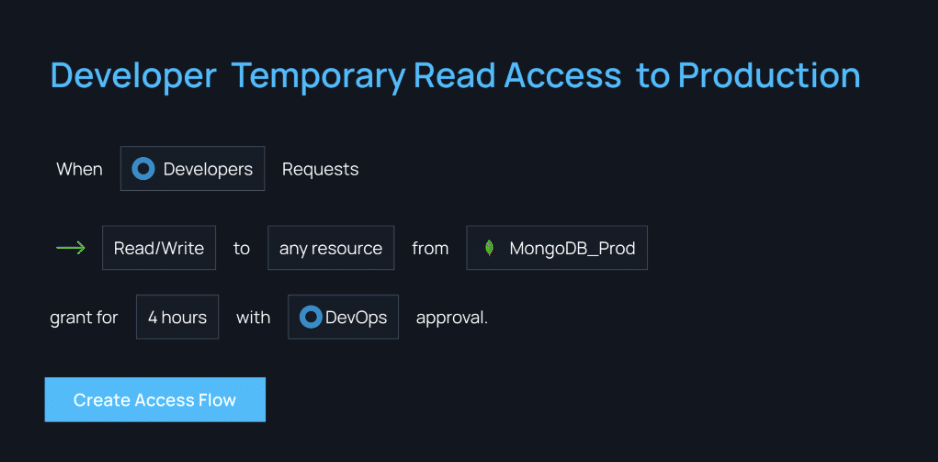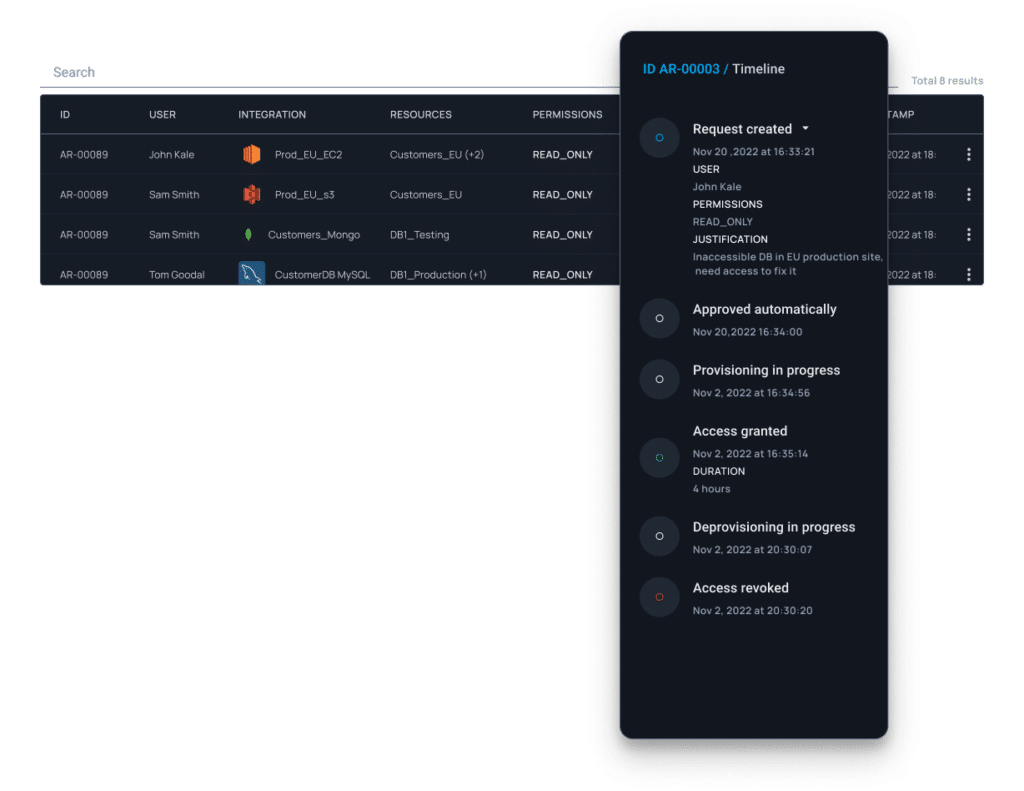Table of Contents
After polling many of our clients, we put together this list of the top 6 most-seen permissions management use cases. In addition, we show how a permissions management solution benefits each case.
1. JIT Provisioning in Permissions Management
JIT provisioning automates the process of generating and updating user accounts. Instead of proactive account creation, user accounts come into play when users initiate their first login attempts to applications, provided they have the necessary authorization.


2. Automated Least-Privilege Access
Automating the enforcement of least-privilege access brings numerous advantages to companies, such as heightened security, heightened operational efficiency, and improved compliance.
By automating the process of granting and revoking access, organizations can drastically diminish the risk of unauthorized privileges, ensuring that employees possess only the resources essential for their specific roles. This minimizes the attack surface and reduces the potential consequences of security incidents.

Additionally, automation eliminates the necessity for laborious manual procedures, enabling employees to swiftly acquire the necessary access. By streamlining the processes of access requests, approvals, and provisioning, companies can enhance operational efficiency while alleviating the administrative workload on IT and security teams.

3. Incident Management via ChatOps
ChatOps bridges the gap between human interaction and automated processes, resulting in a powerful tool that empowers modern teams. It’s a game-changer in DevOps and beyond, boosting efficiency, productivity, and collaboration. When used for just-in-time access to sensitive resources, it becomes even more of a necessity for busy dev teams.
The connection between effective communication and successful incident management is no mystery. Teams that excel in communication and collaboration not only address incidents more swiftly but also maintain satisfaction among both internal teams and external users.
Moreover, their adeptness in postmortems aids in pinpointing underlying issues and proactively preventing future incidents. It’s no wonder that ChatOps has seamlessly integrated into the processes of numerous incident management teams.



4. Automated Self-Service Access Requests
In legacy environments, data or resource access requests often happen in emails, phone calls, or in an IT service management ticketing system. In a modern identity implementation, an Identity Management (IDM) tool or process that allows self-service access requests makes security and compliance easier through consistent enforcement and tracking of digital identities across the IT ecosystem.


5. Break-glass Scenarios
When implementing an access management solution such as a Privileged Access Management (PAM) tool, businesses frequently find the need for a contingency access capability. This ensures that users can still access their systems in emergencies, particularly when the deployed PAM tool is unavailable for regular access provisioning.


6. Complying with Regulations for Data Access Control
In the contemporary global business landscape, enterprises encounter formidable challenges such as swiftly evolving technology, the imperative of digital transformation, and a growing array of industry-specific regulations pertaining to data security and privacy. Non-compliance with these regulations may result in substantial fines, penalties, and erosion of customer trust.

Comply with SOX, SOC2, ISO27001, and other relevant standards by verifying and demonstrating that solely authorized individuals access the minimal necessary sensitive data.





